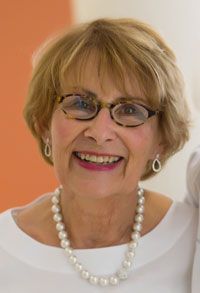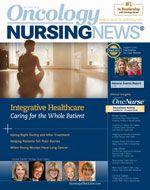Patient Advisors and Navigators Join Forces to Improve Cancer Care
Cancer centers throughout the country are faced with an increased demand for cancer care and a shrinking oncology workforce.1 As a result, institutions are struggling to find innovative ways to deliver patient-centered quality care in a cost-effective manner.
Loretta Muss, RN, BA

Loretta Muss, RN, BA
Cancer centers throughout the country are faced with an increased demand for cancer care and a shrinking oncology workforce.1 As a result, institutions are struggling to find innovative ways to deliver patient-centered quality care in a cost-effective manner.
In North Carolina, many institutions are facing these same challenges, especially since cancer has surpassed heart disease as the leading cause of death across the state in 2013.2 North Carolina is a large state with 100 counties and a high percentage of people who are below the national average poverty level.3 The NC Cancer Hospital at UNC is the only public cancer hospital in the state with a mission to provide care for its residents regardless of their financial ability to pay for their care or where they live. This is a mission that is taken very seriously at the NC Cancer Hospital where we provide 135,000 patient visits each year.4 Each patient is unique, and our goal is to optimize patient safety and quality of care.
The NC Cancer Hospital is the clinical home to UNC Lineberger Comprehensive Cancer Center (LCCC), which is one of three National Cancer Institute (NCI)—designated comprehensive cancer centers in the state. The hospital has been in operation since 2009 and was designed with in- put from a variety of stakeholders, including patients and healthcare providers. LCCC provides a collaborative home for over 40 departments, including the Schools of Medicine, Dentistry, Gillings Global Public Health, Eshelman School of Pharmacy, and the College of Arts and Sciences who work together within the University of North Carolina at Chapel Hill.
The cancer research center has a reputation for bringing together outstanding scientists and physicians to conduct research that improves the prevention, early detection, and treatment of cancer. Members include Nobel Laureates such as Aziz Sancar, MD, who are dedicated to working collaboratively with communities, healthcare providers, patients, and caregivers to address challenges in cancer treatment as well as healthcare disparities throughout North Carolina.
An Engaged Volunteer Corps
Hospitals and healthcare systems have confirmed the growing benefit of having trained engaged volunteers to support the healthcare team and increase patient satisfaction.5.6 Lay health advisors have a rich history in North Carolina of utilizing trained volunteers to promote health and disease prevention.7
Building upon their success, and the success of Harold Freeman’s model of patient navigation,8 four models of patient navigation were developed by the UNC Cancer Network in 2008. The goal was to ensure timely delivery of cancer services and resources to individuals using nurse and lay patient navigators. These models of patient navigation have increased throughout North Carolina and continue today.
In 2009, the North Carolina Cancer Hospital (NCCH) embarked on a mission to partner with patients and families to improve the healthcare experience for all our patients. By creating a Patient and Family Advisory Board (PFAB), past and present patients, families, and caregivers were invited to serve as volunteers on various committees throughout the NCCH in order to build collaborations within the health system. Allowing them to offer their unique perspectives and valuable feedback regarding the care they received as patients has helped to ensure that the highest quality of comprehensive, safe, and compassionate care be delivered at the NCCH.
Jean Sellers, RN, MSN

Jean Sellers, RN, MSN
A coordinator was identified and was responsible for ensuring that all members had been interviewed and screened appropriately through volunteer services. Members needed to be dedicated, objective, and represent the diversity of the demographic and geographic population served by the NCCH. Additional training was provided to ensure they had the appropriate skills and understanding of their role. The coordinator was responsible to ensure that these patient advisors were fully integrated into the various committees, such as ethics, emergency department, facility design, survivorship care planning, patient satisfaction, Patient-Centered Outcomes Research Institute (PCORI) grant writing, and website redesign, throughout the NCCH. Partnering with patients and families has enabled these advisors to celebrate many successes and increase patient satisfaction at the NCCH. They share their experience and the importance of patient-centered care with students from the Schools of Public Health, Medicine, and Nursing and also led the development of a caregiver support group based upon needs identified during their own experience.
“Heels of Hope”
One area to highlight is the collaborative efforts that took place for the development of the lay navigation model of support for cancer patients within the NCCH that exists today. Members from the PFAB, healthcare staff, physicians, chaplains, volunteer program, and hospital leadership came together and identified an unmet need among the underserved cancer patients being treated at NCCH.
These patients included racial/ethnic minorities, the uninsured and underinsured, low-income, and those residing in rural dwellings who required additional support beyond usual clinical care to achieve success with their treatment.
A lay navigation committee was developed with the goal to implement and integrate a volunteer lay patient navigation model of support called “Heels of Hope.” Lay volunteer navigators would work with nurse navigators to provide nonclinical support to patients, including identification and resolution of barriers to care and providing ongoing emotional support, thus enhancing the overall patient and caregiver experience.
For the purpose of this pilot, lay navigators were identified as UNC volunteers who receive additional training to ensure they have the necessary skills when interacting with patients, caregivers, and members of the healthcare team.
Partnering with the volunteer program, UNC chaplains, and nurse navigators, the PFAB was critical to ensure success with the ongoing training, orientation, and support that volunteers would require. Many members of the PFAB participated in the development of the program. Board members were able to share their own experiences with the committee in order to ensure that the training was comprehensive and that gaps in care could be addressed.
The Heels of Hope Lay Patient Navigation Model and patient advisors further integrate patient-and family-centered care into the culture of the NC Cancer Hospital. Almost all of the lay navigators and the PFAB members are cancer survivors and caregivers. Patient advisors provide feedback from their participation on committees to increase the quality of care and improve the patient and caregiver experience. Today, lay navigators are providing additional nonclinical support in the following clinics:
• Bone Marrow Transplant Unit (inpatient)
• Breast
• GU
• GYN/ONC
• Head & Neck
• Thoracic
Outcome measures are being collected and shared with the UNC Cancer Committee as part of the accreditation process with the American College of Surgeons Commission on Cancer.9
A cancer diagnosis can be a devastating experience. Utilizing trained volunteers as patient advisors and patient navigators is one way to systematically address the complex and fragmented healthcare system while providing emotional support for patients and families during a difficult time.
The lay navigators and patient advisors bring a unique perspective and a personal dimension to cancer care. It is our hope that this commitment to caring will reduce the patient’s fear and frustration, improve timely access and adherence to care, and result in better outcomes and quality of life.
Jean Sellers, MSN, RN, is clinical administrative director at the UNC Cancer Network in Chapel Hill, North Carolina, where Loretta Muss, RN, serves as coordinator of the Patient and Family Advisory Council of NC Cancer Hospital, UNC Healthcare.
REFERENCES
1. Institutes of Medicine. Delivering High-Quality Cancer Care: Chart- ing a New Course for a System in Crisis. Washington, DC: National Academics Press. 2013. www.iom.nationalacademies.org. Accessed September 28, 2015.
2. North Carolina State Center for Health Statistics. Statistics and Reports: Vital Statistics, Volume 2: Leading Causes of Death. www. schs.state.nc.us/data/vital.cfm. Accessed September 28, 2015. 3. US Census Bureau. North Carolina Quick Facts, 2014. www.quick- facts.census.gov. Accessed September 28, 2015.
4. UNC Lineberger Comprehensive Cancer Center. Fact Sheet. https://unclineberger.org/files/fact-sheets/unc-lineberger. Accessed September 28, 2015.
5. Hotchkiss RB, Fottler M, Unruh L. Valuing volunteers: the impact of volunteerism on hospital performance. Health Care Manage Rev. 2009;34(2)119-129.
6. Wynn J. The transforming power of patient advisors. NC Medical Journal. 2015;76(3):171-173.
7. Earp J, Eng E, O’Malley M, et al. Increasing use of mammography among older, rural African American women: results from a community trial. Am J Public Health. 2002;92(4):646-654.
8. Freeman HP, Rodriguez RL. History and principles of patient naviga- tion. Cancer. 2011;117(suppl 15):3539-3542.
9. American College of Surgeons Commission on Cancer. Cancer Program Standards 2012: Ensuring Patient-Centered Care [v.1.2.1, released January 2014]. http://facs.org/cancer/coc/programstan- dards2012.html. Accessed September 28, 2015.

Innovative Program Reduces Nurse Turnover and Fosters Development
Published: September 12th 2024 | Updated: September 12th 2024The US Oncology Network (The Network) has developed one of the most comprehensive programs in the nation to support the professional development and retention of new oncology nurses.
Innovative Program Reduces Nurse Turnover and Fosters Development
Published: September 12th 2024 | Updated: September 12th 2024The US Oncology Network (The Network) has developed one of the most comprehensive programs in the nation to support the professional development and retention of new oncology nurses.
Latest Conference Coverage
2 Commerce Drive
Cranbury, NJ 08512
All rights reserved.



